Myvatn lake and geothermal area
Myvatn lake and geothermal area with Hverfjall Volcano hike and Skútustaðagígar crater
Short summary:
Myvatn is a lake located in the north of Iceland, known for its unique and diverse ecosystem, including a variety of birdlife and volcanic activity. The surrounding area is also home to several geothermal hot springs, including the famous Myvatn Nature Baths. The Myvatn area is a popular tourist destination, offering activities such as hiking, fishing, and sightseeing. It is also known for its beautiful landscapes and geological formations, including the Dimmuborgir lava fields and the Hverfjall volcano.
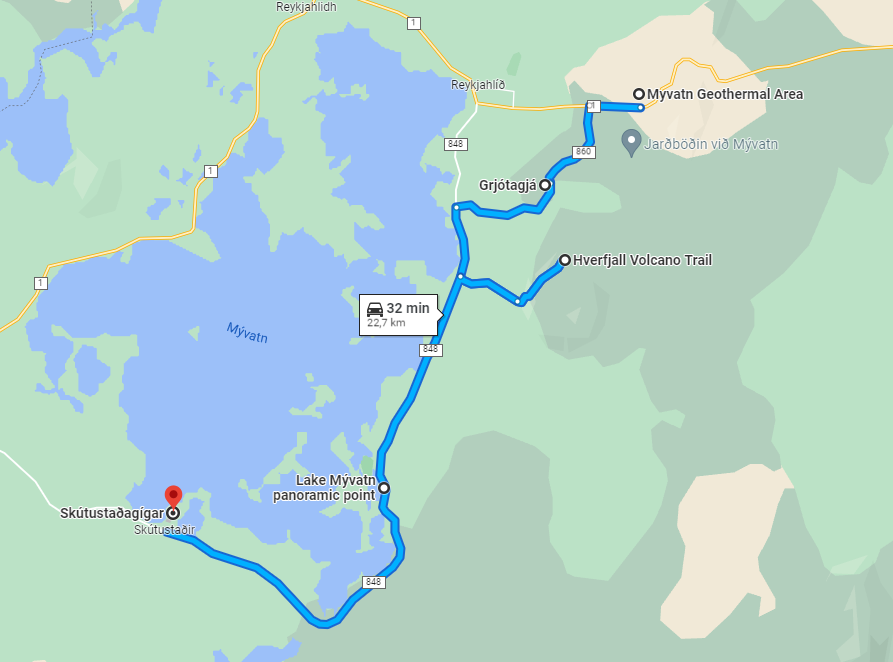
- 1 - Hverarönd - Myvatn geothermal area
- 2 - Grjótagjá hot spring
- 3 - hverfjall volcano trail
- 4 - Skútustaðagígar crater hike
Myvatn is a lake located in the north of Iceland, known for its unique and diverse ecosystem, including a variety of birdlife and volcanic activity. The surrounding area is also home to several geothermal hot springs, including the famous Myvatn Nature Baths. The Myvatn area is a popular tourist destination, offering activities such as hiking, fishing, and sightseeing. It is also known for its beautiful landscapes and geological formations, including the Dimmuborgir lava fields and the Hverfjall volcano.

Stop 1 in Zone 11 stop at Myvatn geothermal area
Steaming fields at Hverir (Hverarönd) boiling fields
Location: HERE
Islandic name: Hverarönd
Hverarönd, also known as Hverir, is a geothermal area located near the lake Myvatn in Iceland. It is known for its boiling mud pools, steaming fumaroles, and sulfuric vents, which emit steam and sulfur gases. The area is situated on a volcanic plateau, and the geothermal activity is a result of the area's geology and proximity to active volcanic systems.
Hverarönd is located on the northeast of Myvatn and it's around 1 hour drive from Akureyri. The area is accessible by foot and it's a short hike from the parking lot to the area. Visitors should be aware that the area can get quite hot and the smell of sulfur can be strong, so it's recommended to wear closed-toe shoes and bring water.
It's important to note that the area is a protected natural site and visitors should be mindful of the fragile ecosystem and avoid walking on the delicate features. Also, it's forbidden to take rocks or other materials from the area.
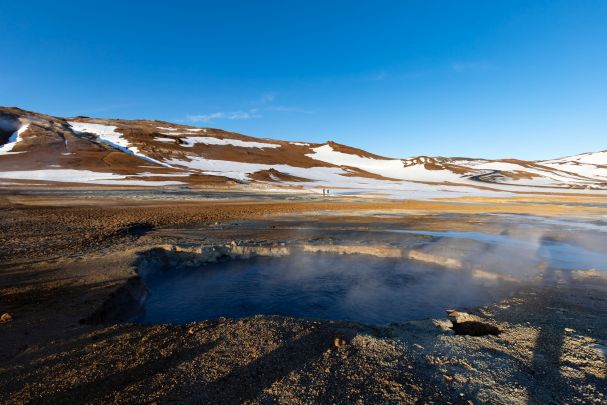

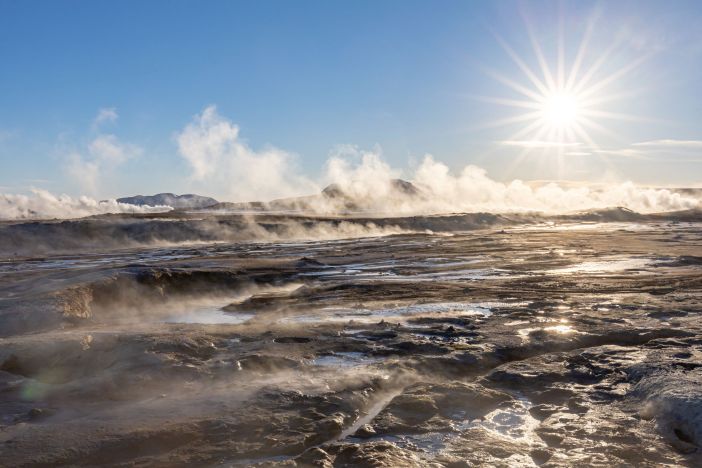
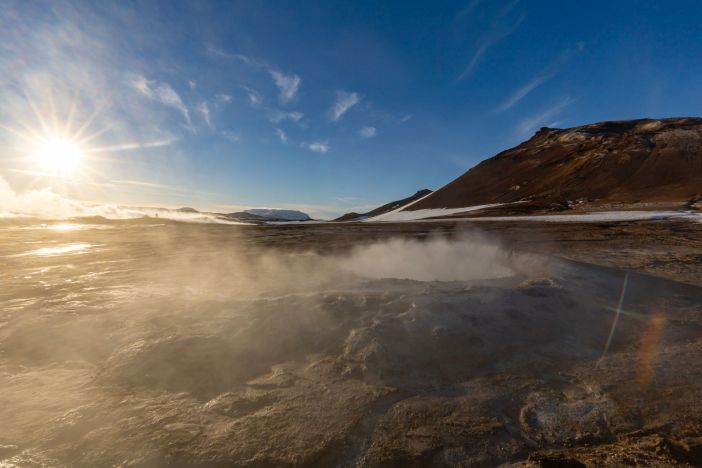
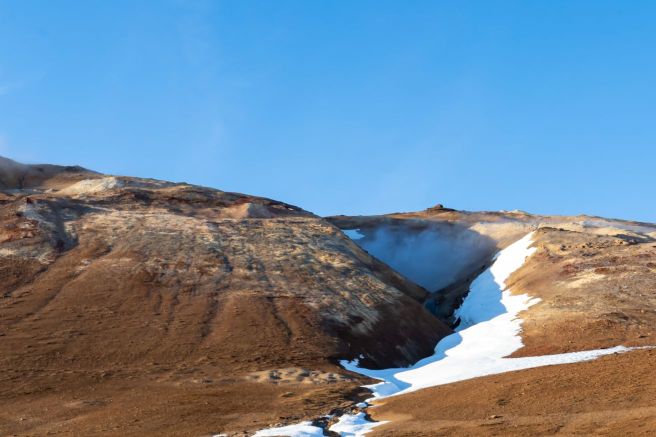
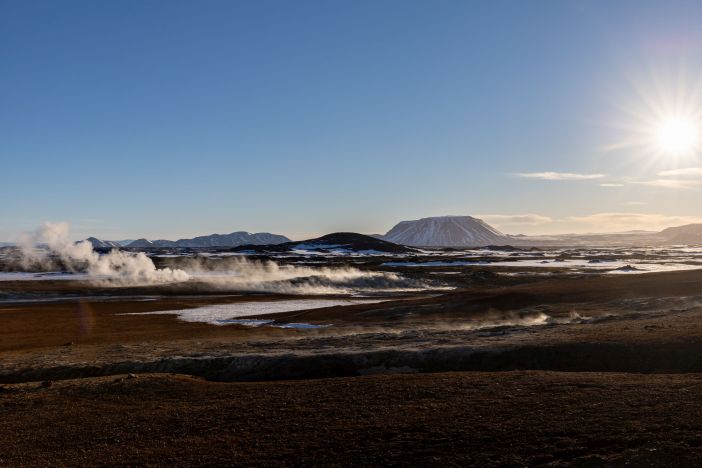
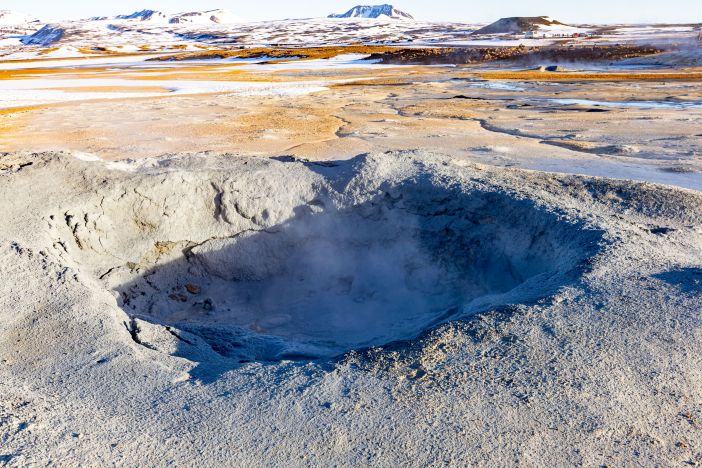
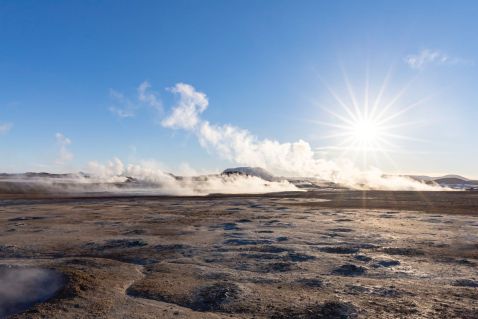
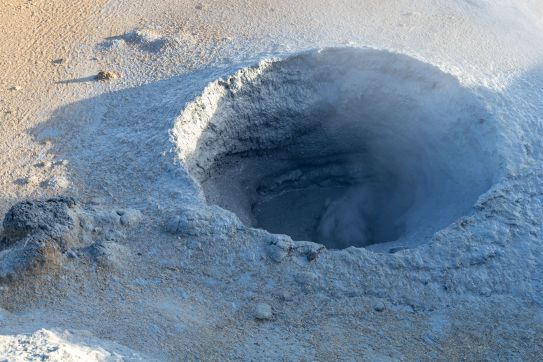
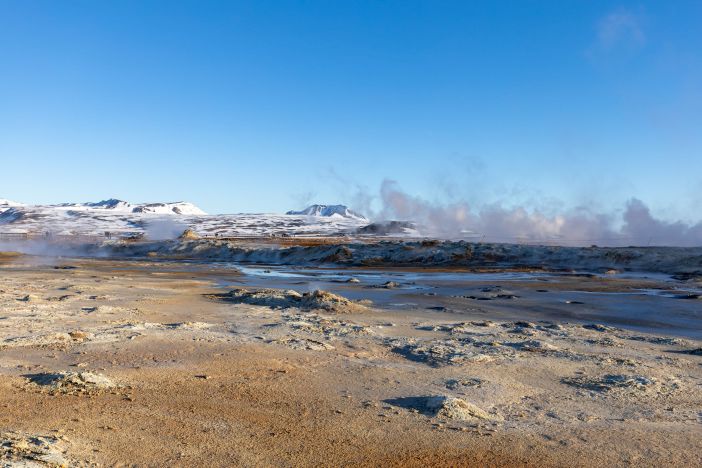
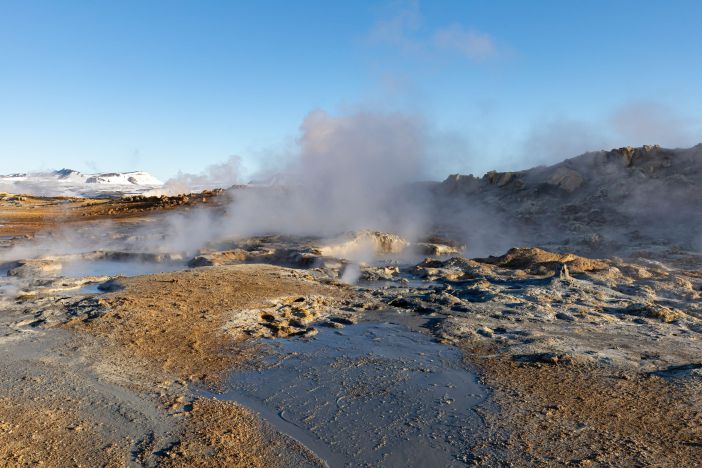
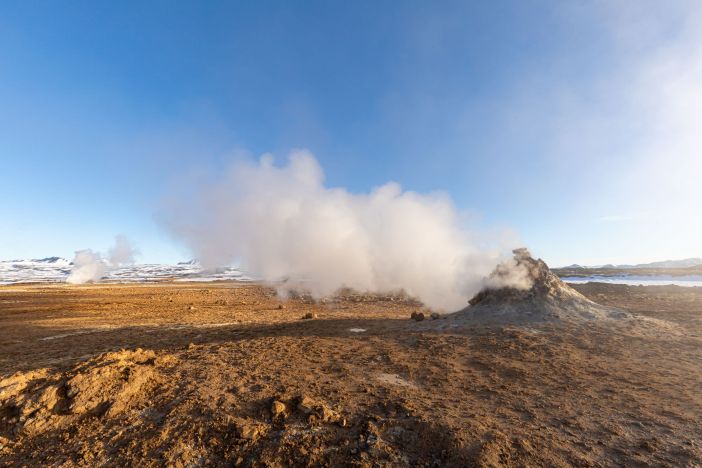
Stop 2 in Zone 11 - Grjótagjá cave
Grjótagjá grotto
Location: HERE
Islandic name: Grjótagjá
Grjótagjá is a small lava cave located near the lake Mývatn in Iceland, known for its hot spring inside the cave. The cave is situated on a volcanic plateau, and the hot spring is a result of the area's geology and proximity to active volcanic systems. The water temperature in the spring ranges from 37-40 °C (98-104 °F).
Grjótagjá has been used as a bathing spot since the 18th century, but due to volcanic activity in the area, the water temperature in the spring has risen, making it too hot for bathing. However, the cave is still a popular tourist destination, known for its unique and otherworldly landscape. Visitors can still explore the cave and the spring and admire the beautiful views of the surrounding area.
It's worth noting that Grjótagjá is a protected natural site and visitors should be mindful of the fragile ecosystem and avoid walking on the delicate features. Also, it's forbidden to bathe in the spring, as the high temperatures can be dangerous and the water can contain harmful bacteria.
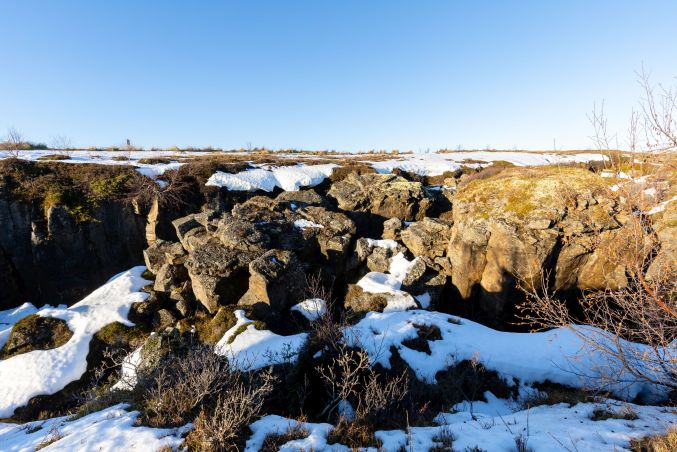
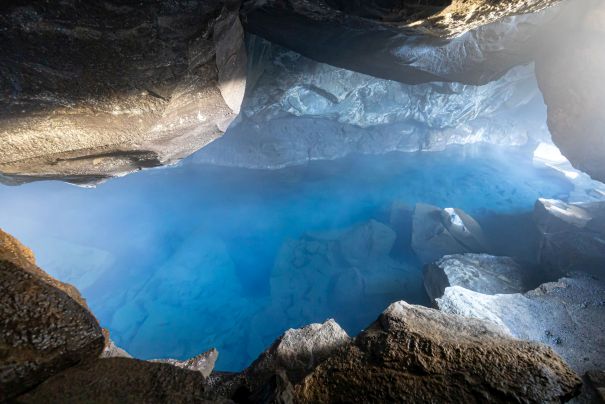
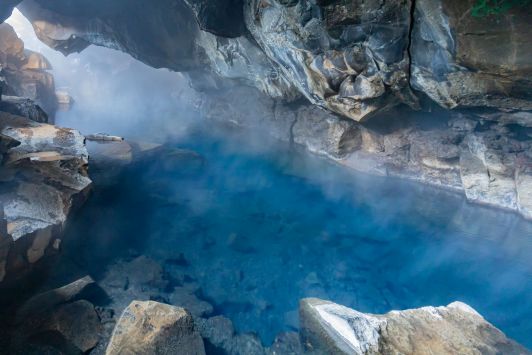

Stop 3 in Zone 11 - Hverfjall volcano
Hverfjall volcano hike
Things to know
Location: HERE
Islandic name: Hverfjall
Hverfjall, also known as Hverfjall, is a volcano located near the lake Mývatn in Iceland, known for its large crater and its symmetrical shape. The volcano is a tephra cone, formed by explosive eruptions of ash and pumice. The volcano has not erupted for around 2300 years and is considered to be extinct.
The volcano is around 1,000 years old and it has a diameter of about 1 km (0.6 mi) and a height of 140 meters (460 ft). The volcano stands out in the area because of its symmetrical shape and impressive size, it is visible from miles away. The volcano is a popular tourist destination, known for its unique and otherworldly landscape. Visitors can explore the volcano on their own or take guided tours to learn more about the history and geology of the area.

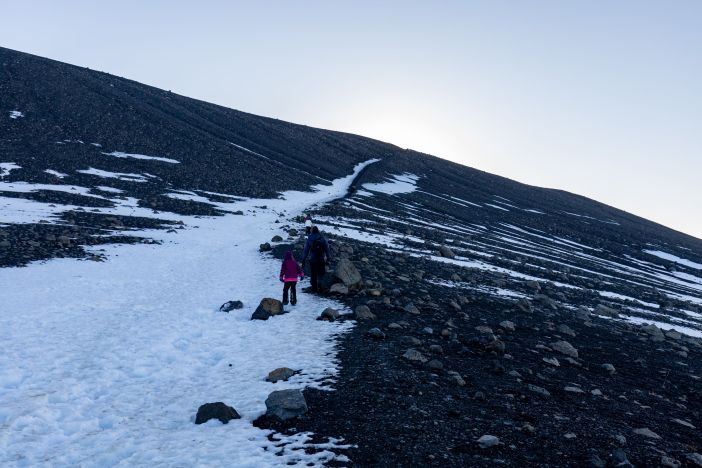

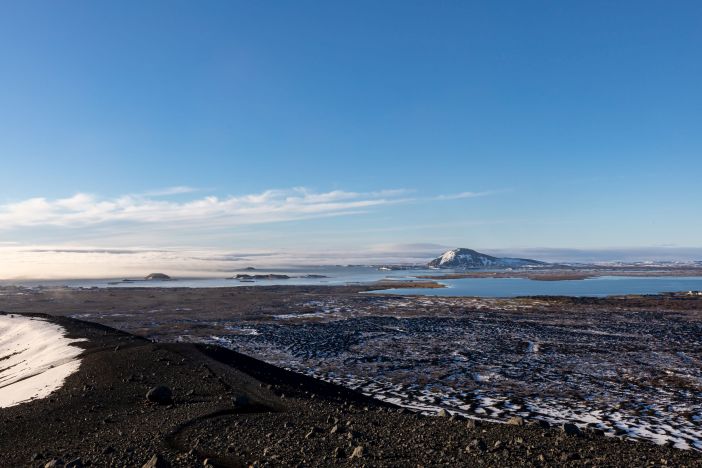
Location: HERE
Islandic name: Hverfjall
Hverfjall, also known as Hverfjall, is a volcano located near the lake Mývatn in Iceland, known for its large crater and its symmetrical shape. The volcano is a tephra cone, formed by explosive eruptions of ash and pumice. The volcano has not erupted for around 2300 years and is considered to be extinct.
The volcano is around 1,000 years old and it has a diameter of about 1 km (0.6 mi) and a height of 140 meters (460 ft). The volcano stands out in the area because of its symmetrical shape and impressive size, it is visible from miles away. The volcano is a popular tourist destination, known for its unique and otherworldly landscape. Visitors can explore the volcano on their own or take guided tours to learn more about the history and geology of the area.




Stop 4 in Zone 11 - Hverfjall volcano
Skútustaðagígar crater
Things to know
Location: HERE
Islandic name: Hverfjall
Skútustadagígar, also known as Skútustaðagígar, is a volcanic crater row located near the lake Mývatn in Iceland. It is known for its unique and otherworldly landscape, formed by a series of volcanic craters and pseudocraters. The craters were formed around 2,300 years ago as a result of a volcanic eruption beneath a shallow lake. The eruption caused the lake to drain, leaving behind a series of craters and pseudocraters, which were formed by steam explosions.
Skútustadagígar is a popular tourist destination, known for its unique and otherworldly landscape. Visitors can explore the area on their own or take guided tours to learn more about the history and geology of the area. The area is easily accessible by car and it's open year-round, although the best time to visit is during the summer months when the weather is warmer. Visitors should be aware that the area can be slippery and the path can get muddy, so it's recommended to wear proper shoes and be mindful of the weather conditions.
It's worth noting that the area is a protected natural site and visitors should be mindful of the fragile ecosystem and avoid walking on the delicate features. Also, it's forbidden to take rocks or other materials from the area.

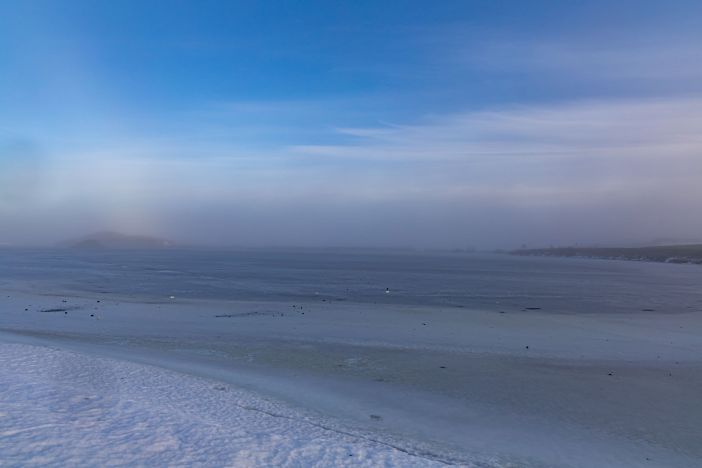
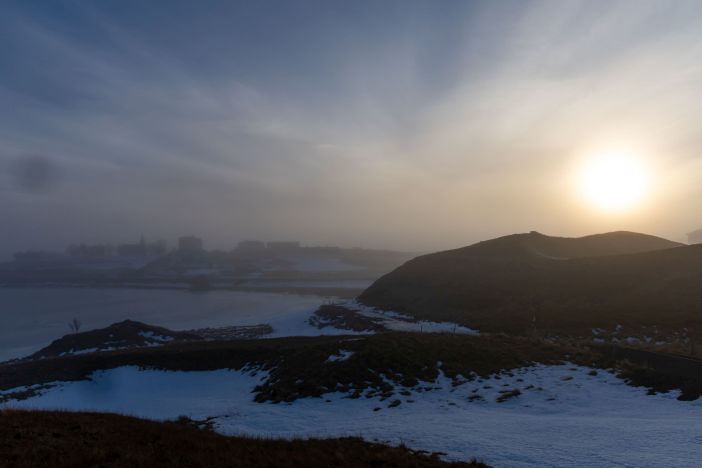
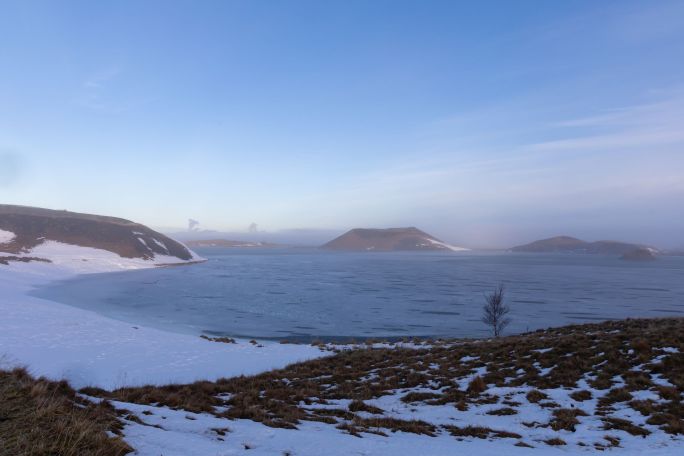
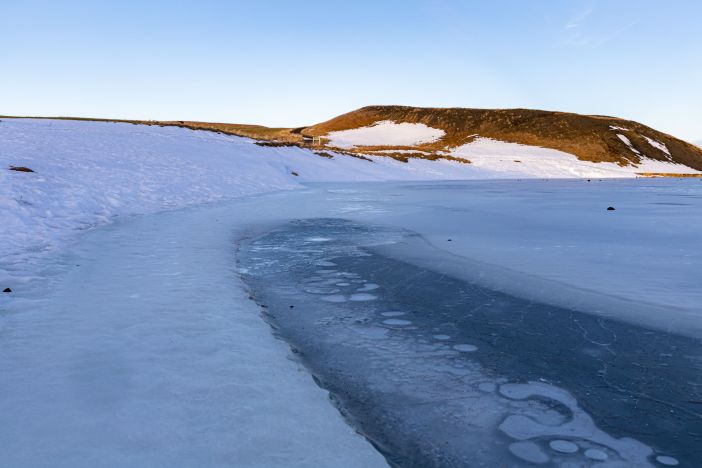
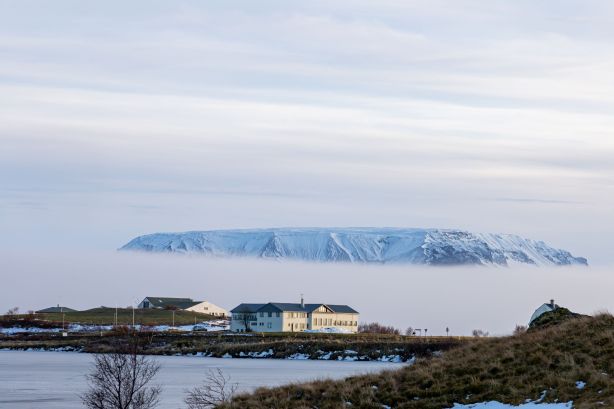

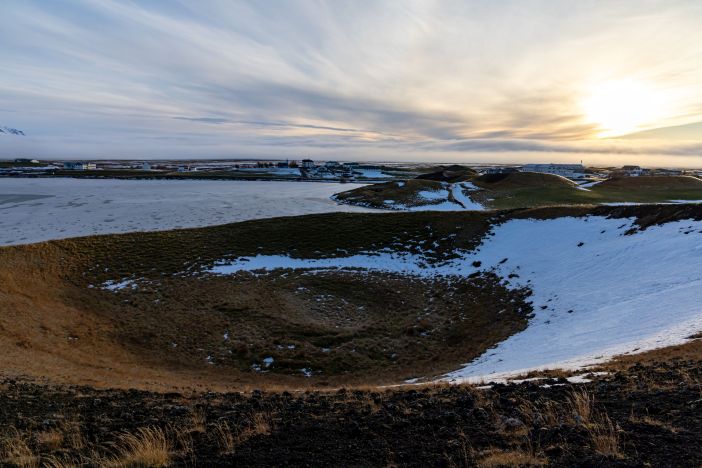
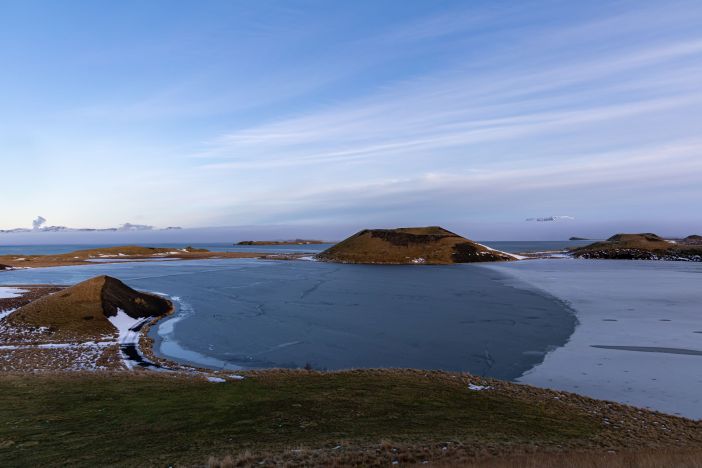
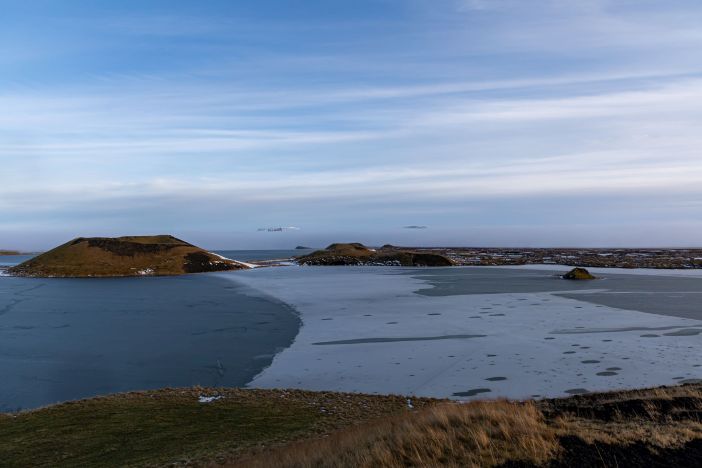
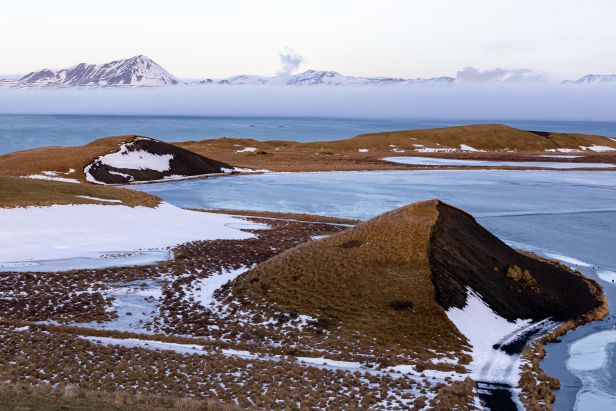
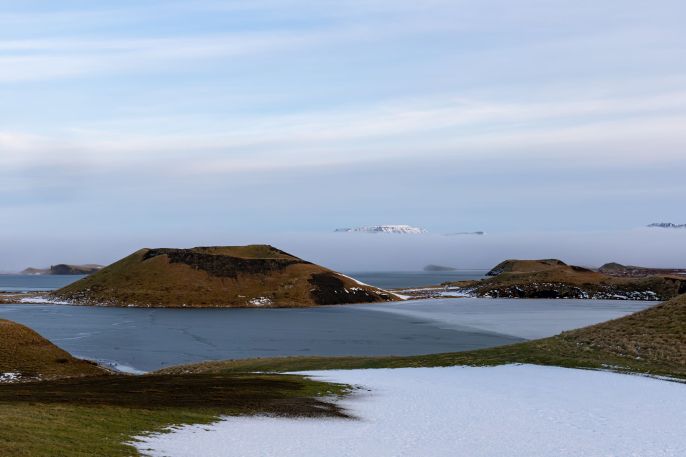
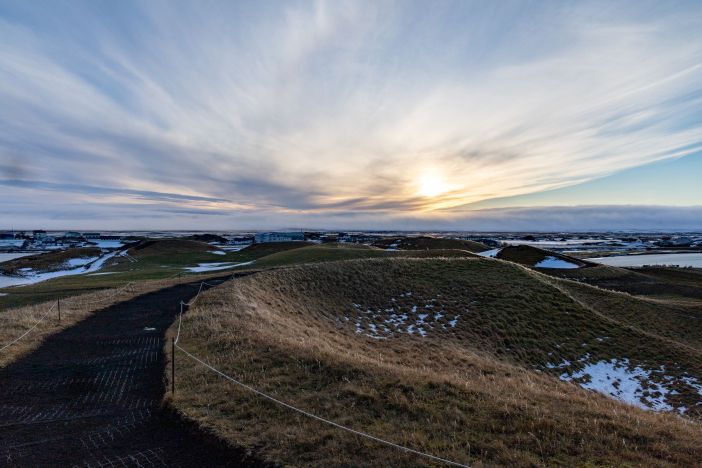
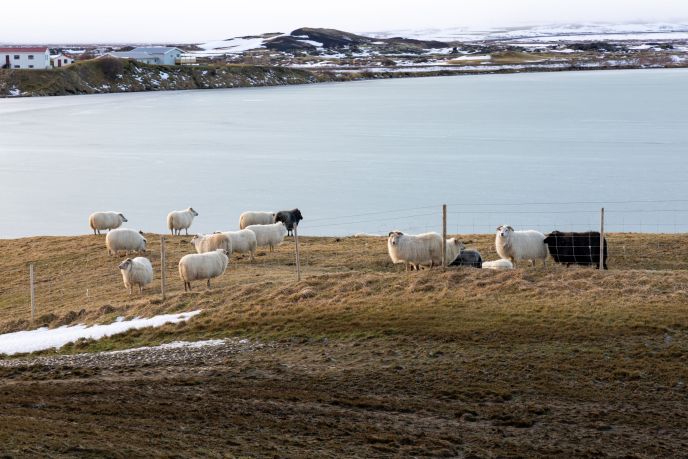
Location: HERE
Islandic name: Hverfjall
Skútustadagígar, also known as Skútustaðagígar, is a volcanic crater row located near the lake Mývatn in Iceland. It is known for its unique and otherworldly landscape, formed by a series of volcanic craters and pseudocraters. The craters were formed around 2,300 years ago as a result of a volcanic eruption beneath a shallow lake. The eruption caused the lake to drain, leaving behind a series of craters and pseudocraters, which were formed by steam explosions.
Skútustadagígar is a popular tourist destination, known for its unique and otherworldly landscape. Visitors can explore the area on their own or take guided tours to learn more about the history and geology of the area. The area is easily accessible by car and it's open year-round, although the best time to visit is during the summer months when the weather is warmer. Visitors should be aware that the area can be slippery and the path can get muddy, so it's recommended to wear proper shoes and be mindful of the weather conditions.
It's worth noting that the area is a protected natural site and visitors should be mindful of the fragile ecosystem and avoid walking on the delicate features. Also, it's forbidden to take rocks or other materials from the area.













